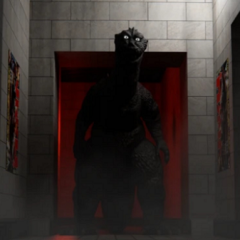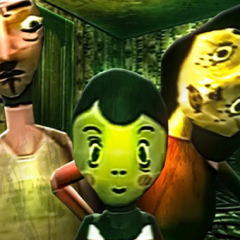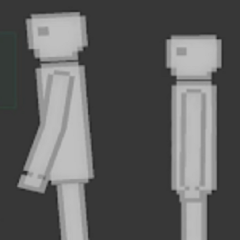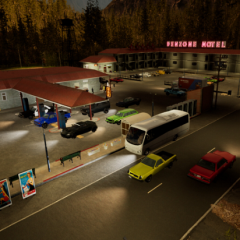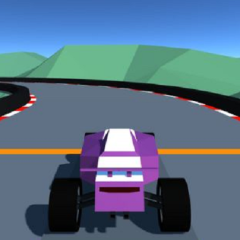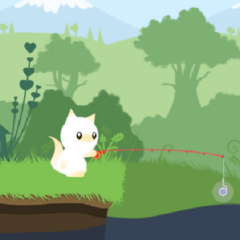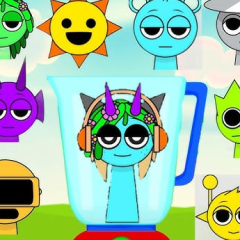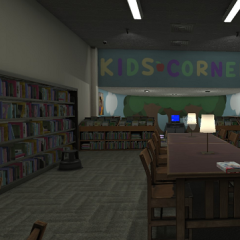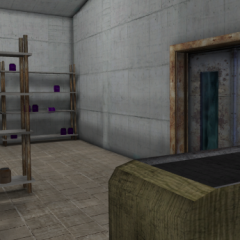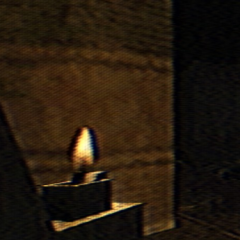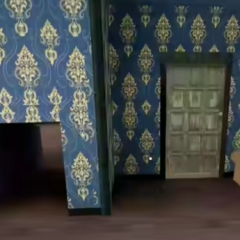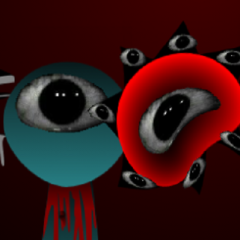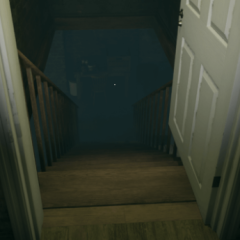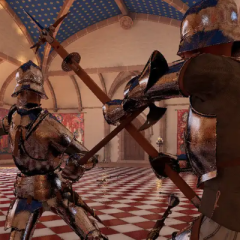Hungry Lamu 2 takes the surreal horror of the original game and develops it into a more mature, immersive experience that blurs the line between psychological thriller and environmental storytelling. The game no longer hides behind a cheerful façade—instead, it embraces its eerie tone from the very beginning. Players find themselves in a forest that feels broken, haunted not by monsters but by memory. Lamu, once a seemingly innocent character, now exists in a space where reality fractures, and nothing feels stable. The sequel shifts the focus from shock to slow-building dread, placing the player in a world where the environment itself becomes the narrator.
Progression Through Shifting Realities
A defining feature of Hungry Lamu 2 is the way it transitions between two visual and mechanical styles. The 2D segments appear almost like a quiet walking simulator, encouraging players to explore, collect items, and observe the surroundings. But at specific narrative points, the perspective shifts into a low-resolution first-person view. These 3D sections aren’t just stylistic—they change the pacing and mood completely. The cheerful visuals disappear, replaced by flickering lights, distorted sounds, and claustrophobic corridors. These changes symbolize Lamu’s mental fragmentation, drawing the player deeper into his subconscious world.
Mechanics and Interactive Structure
Despite having no combat or spoken dialogue, the game offers a surprising amount of interaction. Players must rely on observation, pattern recognition, and intuition to progress. Clues are hidden in the environment, with no prompts or glowing indicators to guide the way. Some objects are necessary to unlock further areas; others only serve to deepen the narrative.
Key interactive elements include:
· Collecting environmental items that reveal story fragments
· Triggering transitions between 2D and 3D perspectives
· Observing character behavior changes across different moments
· Uncovering optional areas tied to alternate endings
· Solving location-based puzzles with indirect clues
The game rewards players who are attentive and patient, offering new discoveries for those who choose to explore thoroughly.
Emotional Themes and Story Depth
Hungry Lamu 2 moves beyond the simple concept of a “killer llama” and into more reflective territory. The horror here is rooted in confusion, guilt, and memory loss. Lamu appears less like a predator and more like a being caught in a loop he doesn’t fully understand. The forest, which once represented freedom or nature, now feels like a locked room filled with echoes. Through scattered visual metaphors—shadows, broken mirrors, unmarked graves—the player begins to realize that the story is less about survival and more about confronting something buried in Lamu’s identity. The ambiguity invites multiple interpretations, encouraging replay to uncover more layers.




